Portal:Books/Selected article/
Selected article
Usage
- Add a new Selected article to the next available subpage.
- Update "max=" to new total for its {{Random portal component}} on the main page.
Selected society biographies list
Portal:Books/Selected article/1

The Encyclopædia Britannica is a general English-language encyclopaedia published by Encyclopædia Britannica, Inc., a privately held company. The articles in the Britannica are aimed at educated adult readers, and written by a staff of 19 full-time editors and over 4,000 expert contributors. It is widely perceived as the most scholarly of encyclopaedias.The Britannica is the oldest English-language encyclopaedia still in print. It was first published between 1768 and 1771 in Edinburgh and quickly grew in popularity and size, with its third edition in 1801 reaching 20 volumes. Its rising stature helped in recruiting eminent contributors, and the 9th edition (1875–1889) and the 11th edition (1911) are regarded as landmark encyclopaedias for scholarship and literary style. In 1933, the Britannica became the first encyclopaedia to adopt a "continuous revision" policy, in which the encyclopaedia is continually reprinted and every article is updated on a regular schedule.
Portal:Books/Selected article/2

Oroonoko is a short novel by Aphra Behn (June 10, 1640 – April 16, 1689), published in 1688, concerning the tragic love of its hero, an enslaved African in Surinam in the 1660s, and the author's own experiences in the new South American colony. It is generally claimed (most famously by Virginia Woolf) that Aphra Behn was the first professional female author in English, living entirely by her own earnings. While this is not entirely true, Behn was the first professional female dramatist, as well as one of the first English novelists, male or female. Although she had written at least one novel previously, Aphra Behn's Oroonoko is both one of the earliest English novels and one of the earliest by a woman.Behn worked for Charles II as a spy during the outset of the Second Dutch War, working to solicit a double agent. However, Charles either failed to pay her for her services or failed to pay her all that he owed her, and Behn, upon returning to England, needed money.
Portal:Books/Selected article/3
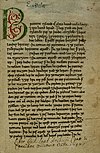
The Peterborough Chronicle (also called the Laud Manuscript), one of the Anglo-Saxon Chronicles, contains unique information about the history of England after the Norman Conquest. According to philologist J.A.W. Bennett, it is the only prose history in English between the Conquest and the later 14th century.The Anglo-Saxon Chronicles were composed and maintained between the various monasteries of Anglo-Saxon England and were an attempt to record the history of Britain throughout the years AD. Typically the chronicles began with the birth of Christ, went through Biblical and Roman history, then continued to the present. Every major religious house in England kept its own, individual chronicle, and the chronicles were not compared with each other or in any way kept uniform. However, whenever a monastery's chronicle was damaged, or when a new monastery began a chronicle, nearby monasteries would lend out their chronicles for copying. Thus, a new chronicle would be identical to the lender's until they reached the date of copying and then would be idiosyncratic.
Portal:Books/Selected article/4

The Voynich manuscript is a mysterious illustrated book written in an indecipherable text. It is thought to have been written between approximately 1450 and 1520 by an unknown author in an unidentified script and language.Over its recorded existence, the Voynich manuscript has been the object of intense study by many professional and amateur cryptographers, including some top American and British codebreakers of World War II fame (all of whom failed to decrypt a single word). This string of failures has turned the Voynich manuscript into a famous subject of historical cryptology, but it has also given weight to the theory that the book is simply an elaborate hoax — a meaningless sequence of arbitrary symbols. The book is named after the Polish-American book-dealer Wilfrid M. Voynich, who acquired it in 1912. As of 2005, the Voynich manuscript is item MS 408 in the Beinecke Rare Book and Manuscript Library of Yale University. The first facsimile edition was published in 2005.
Portal:Books/Selected article/5

Thoughts on the education of daughters: with reflections on female conduct, in the more important duties of life is the first published work of the British feminist Mary Wollstonecraft. Published in 1787 by her friend Joseph Johnson, Thoughts is a conduct book that offers advice on female education to the emerging British middle class. Although dominated by considerations of morality and etiquette, the text also contains basic child-rearing instructions, such as how to care for an infant.An early version of the modern self-help book, the 18th-century British conduct book drew on many literary traditions, such as advice manuals and religious narratives. There was an explosion in the number of conduct books published during the second half of the eighteenth century, and Wollstonecraft took advantage of this burgeoning market when she published Thoughts. However, the book was only moderately successful: it was favourably reviewed, but only by one journal and it was reprinted only once. Although it was excerpted in popular contemporary magazines, it was not republished until the rise of feminist literary criticism in the 1970s.
Portal:Books/Selected article/6 The Log from the Sea of Cortez is a book written by John Steinbeck, published in 1951, which details a six-week marine specimen-collecting boat expedition he made in 1940 at various sites in the Gulf of California (also known as the Sea of Cortez), with his friend, marine biologist Ed Ricketts. It is regarded as one of Steinbeck's most important works of non-fiction chiefly because of the involvement of Ricketts, who shaped Steinbeck's thinking and provided the prototype for many of the pivotal characters in his fiction, and the insights it gives into the philosophies of the two men.The Log from the Sea of Cortez is the narrative portion of an unsuccessful earlier work, Sea of Cortez: A Leisurely Journal of Travel and Research, which was published by Steinbeck and Ricketts shortly after their return from the Gulf of California, and combined the journals of the collecting expedition, reworked by Steinbeck, with Ricketts' species catalogue. After Ricketts' death in 1948, Steinbeck dropped the species catalogue from the earlier work and republished it with a eulogy to his friend added as a foreword.
Portal:Books/Selected article/7 The Lord of the Rings is an epic high fantasy novel written by the English academic and philologist J. R. R. Tolkien. The story began as a sequel to Tolkien's earlier work, The Hobbit, but developed into a much larger story. It was written in stages between 1937 and 1949, with much of it being created during World War II.Although intended as a single-volume work, it was originally published in three volumes in 1954 and 1955, and it is in this three-volume form that it is popularly known. It has since been reprinted numerous times and translated into many different languages,becoming one of the most popular and influential works in 20th-century literature.The story of The Lord of the Rings takes place in an alternate pre-history, the Third Age of Middle-earth. The lands of Middle-earth are populated by Men (humans) and other humanoid races (Hobbits, Elves, Dwarves, and Orcs), as well as many other creatures, both real and fantastic (Ents, Wargs, Balrogs, Trolls, etc.).
Portal:Books/Selected article/8

The Relapse, or, Virtue in Danger is a Restoration comedy from 1696 written by John Vanbrugh. The play is a sequel to Colley Cibber's Love's Last Shift, or, Virtue Rewarded. In Cibber's Love's Last Shift, a free-living Restoration rake is brought to repentance and reform by the ruses of his wife, while in The Relapse, the rake succumbs again to temptation and has a new love affair. His virtuous wife is also subjected to a determined seduction attempt, and resists with difficulty.Vanbrugh planned The Relapse around particular actors at Drury Lane, writing their stage habits, public reputations, and personal relationships into the text. One such actor was Colley Cibber himself, who played the luxuriant fop Lord Foppington in both Love's Last Shift and The Relapse. However, Vanbrugh's artistic plans were threatened by a cutthroat struggle between London's two theatre companies, each of which was "seducing" actors from the other. The Relapse came close to not being produced at all, but the successful performance that was eventually achieved in November 1696 vindicated Vanbrugh's intentions, and saved the company from bankruptcy as well.
Portal:Books/Selected article/9
The Cantos by Ezra Pound is a long, incomplete poem in 120 sections, each of which is a canto. Most of it was written between 1915 and 1962, although much of the early work was abandoned and the early cantos, as finally published, date from 1922 onwards. It is a book-length work, widely considered to present formidable difficulties to the reader. Strong claims have been made for it as the most significant work of modernist poetry of the twentieth century. As in Pound's prose writing, the themes of economics, governance, and culture are integral to its content.The most striking feature of the text, to a casual browser, is the inclusion of Chinese characters as well as quotations in European languages other than English. Recourse to scholarly commentaries is almost inevitable for a close reader. The range of allusion to historical events is very broad, and abrupt changes occur with little transition.
Portal:Books/Selected article/10

Starship Troopers is a science fiction novel by Robert A. Heinlein, first published (in abridged form) as a serial in The Magazine of Fantasy & Science Fiction (October, November 1959, as "Starship Soldier") and published hardcover in 1959.The first-person narrative is about a young Filipino soldier named Juan "Johnny" Rico and his exploits in the Mobile Infantry, a futuristic military unit equipped with powered armor. Rico's military career progresses from recruit to non-commissioned officer and finally to officer against the backdrop of an interstellar war between mankind and an arachnoid species known as "the Bugs". Through Rico's eyes, Heinlein examines moral and philosophical aspects of suffrage, civic virtue, the necessities of war and capital punishment, and the nature of juvenile delinquency.Starship Troopers won the Hugo Award for Best Novel in 1960. The novel has attracted controversy and criticism for its social and political themes, which some critics claim promote militarism. Starship Troopers has been adapted into several films and games, with the most widely known — as well as the most controversial and criticized — being the 1997 film by Paul Verhoeven.
Portal:Books/Selected article/11

The Book of Kells (Irish: Leabhar Cheanannais) (Dublin, Trinity College Library, MS A. I. (58), sometimes known as the Book of Columba) is an illuminated manuscript that is a masterwork of Western calligraphy and represents the pinnacle of Insular illumination. It is also widely regarded as Ireland's finest national treasure. Transcribed by Celtic monks ca. 800, it contains the four Gospels of the New Testament in Latin, together with various prefatory texts and tables. The text of the Gospels is largely drawn from the Vulgate, although it also includes several passage drawn from the earlier versions of the Bible known as the Vetus Latina.The illustrations and ornamentation of the Book of Kells surpasses that of other Insular Gospels in extravagance and complexity. The decoration combines traditional Christian iconography with the ornate swirling motifs of typical of Insular art. Figures of humans, animals and mythical beasts together with intricate knotwork and interlacing patterns in vibrant colours enliven the manuscript's pages. Many of these minor decorative elements are imbued with Christian symbolism and so further emphasize the themes of the major illustrations.
Portal:Books/Selected article/12
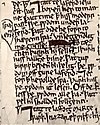
The Ormulum or Orrmulum is a 12th-century work of biblical exegesis, written in early Middle English verse by a monk named Orm (or Ormin). Because of the unique phonetic orthography adopted by the author, the work preserves many details of English pronunciation at a time when the language was in flux after the Norman Conquest; consequently, despite its lack of literary merit, it is invaluable to philologists in tracing the development of English. Orm was concerned that priests were unable to speak the vernacular properly, and so he developed an idiosyncratic spelling system to tell his readers how to pronounce every vowel, and he composed his work using a strict poetic meter that ensured that readers would know which syllables were stressed. Modern scholars can use these two features to reconstruct Middle English just as Orm spoke it. The name "Orm" is derived from Old Norse, meaning worm, dragon. With the suffix of "myn" for "man" (hence "Ormin"), it was a common name throughout the Danelaw area of England. The choice between the two forms of the name was probably dictated by the meter. The title of the poem itself, "Ormulum", is modeled on the Latin speculum ("mirror"); it can be interpreted as either the boastful "Reflection of Orm" or the modest "Researches of Orm".
Portal:Books/Selected article/13

The Anglo-Saxon Chronicle is a collection of annals in Old English narrating the history of the Anglo-Saxons. The annals were created late in the 9th century, probably in Wessex, during the reign of Alfred the Great. Multiple manuscript copies were made and distributed to monasteries across England and were independently updated. In one case, the chronicle was still being actively updated in 1154.Nine manuscripts survive in whole or in part, though not all are of equal historical value, and none of them is the original version. The oldest seems to have been begun towards the end of Alfred's reign, while the most recent was written at Peterborough Abbey after a fire at the monastery there in 1116. Almost all of the material in the chronicle is in the form of annals, by year; the earliest are dated at 60 BC, and historical material follows up to the year in which the chronicle was written, at which point contemporary records begin. These manuscripts collectively are known as the Anglo-Saxon Chronicle. The Chronicle is not unbiased: there are occasions when comparison with other medieval sources makes it clear that the scribes who wrote it omitted events or told one-sided versions of stories; there are also places where the different versions contradict each other.
Portal:Books/Selected article/14
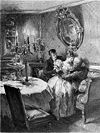
Le Père Goriot (English: Father Goriot or Old Goriot) is an 1835 novel by French novelist and playwright Honoré de Balzac (1799–1850), included in the Scènes de la vie privée section of his novel sequence La Comédie humaine. Set in Paris in 1819, it follows the intertwined lives of three characters: the elderly doting Goriot; a mysterious criminal-in-hiding named Vautrin; and a naive law student named Eugène de Rastignac.Originally published in serial form during the winter of 1834–35, Le Père Goriot is widely considered as Balzac's most important novel. It marks the first serious use by the author of characters who had appeared in other books, a technique that distinguishes Balzac's fiction and makes La Comédie humaine unique among bodies of work. The novel is also noted as an example of his realist style, using minute details to create character and subtext.The novel takes place during the Bourbon Restoration, which brought about profound changes in French society; the struggle of individuals to secure upper-class status is ubiquitous in the book.
Portal:Books/Selected article/15

Make Way for Ducklings is a children's picture book written and illustrated by Robert McCloskey. First published in 1941, the book tells the story of a pair of mallard ducks who decide to raise their family on an island in the lagoon in Boston Public Garden, a park in the center of Boston, Massachusetts.Make Way for Ducklings won the 1942 Caldecott Medal for McCloskey's illustrations, executed in charcoal then lithographed on zinc plates.AS of 2003, the book had sold over two million copies. The book's popularity led to the construction of a statue in the Public Garden of the mother duck and her eight ducklings, which is a popular destination for children and adults alike. The book is also the official children's book of the Commonwealth of Massachusetts.Praise for the book is still high over sixty years since its first publication, mainly for the enhancing illustrations and effective pacing. The book is extremely popular worldwide. The city of Boston, where the story is set, as well as Novodevichy Park, Moscow, have both built small statues based on the story.
Portal:Books/Selected article/16

A Tale of a Tub was the first major work written by Jonathan Swift, composed between 1694 and 1697 and published in 1704. It is probably his most difficult satire, and possibly his most masterly. The Tale is a prose parody which is divided into sections of "digression" and a "tale" of three brothers, each representing one of the main branches of Christianity. The "tale" presents a consistent satire of religious excess, while the digressions are a series of parodies of contemporary writing in literature, politics, theology, Biblical exegesis, and medicine. The overarching parody is of enthusiasm, pride, and credulity. At the time it was written, politics and religion were still linked very closely in England, and the religious and political aspects of the satire can often hardly be separated. The work was published anonymously, and Swift's cousin Thomas later claimed to have written it. It was enormously popular, but Swift believed it damaged his prospect of advancement in the Church of England.
Portal:Books/Selected article/17

Original Stories from Real Life; with Conversations Calculated to Regulate the Affections, and Form the Mind to Truth and Goodness is the only complete work of children's literature by eighteenth-century British feminist Mary Wollstonecraft. Original Stories begins with a frame story, which sketches out the education of two young girls by their maternal teacher Mrs. Mason, proceeded by a series of didactic tales. The book was first published by Joseph Johnson in 1788; a second, illustrated edition, with engravings by William Blake, was released in 1791 and remained in print for around a quarter of a century.In Original Stories Wollstonecraft employs the burgeoning genre of children's literature to promote the education of women and an emerging middle-class ideology. She argues that women can be rational adults if they are educated properly as children (not a widely-held belief in the eighteenth century) and contends that the nascent middle-class ethos is superior to the court culture represented by fairy tales and to the values of chance and luck found in chapbook stories for the poor. Wollstonecraft, in developing her own pedagogy, is also responding to the works of the two most important educational theorists of the eighteenth century: John Locke and Jean-Jacques Rousseau.
Portal:Books/Selected article/18
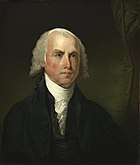
Federalist No. 10 (Federalist Number 10) is an essay by James Madison and the tenth of the Federalist Papers, a series arguing for the ratification of the United States Constitution. It was published on November 22, 1787, under the pseudonym Publius, the name under which all the Federalist Papers were published. The essay is the most famous of the Federalist Papers, along with Federalist No. 51, also by James Madison, and is among the most highly regarded of all American political writings.No. 10 addresses the question of how to guard against "factions," groups of citizens with interests contrary to the rights of others or the interests of the whole community. In today's discourse the term special interest often carries the same connotation. Madison argued that a strong, large republic would be a better guard against those dangers than smaller republics—for instance, the individual states. It is believed that James Madison took ideas from Thomas Hobbes in regards to ideas of a strong controlling government. Opponents of the Constitution offered counterarguments to his position, which were substantially derived from the commentary of Montesquieu on this subject.
Portal:Books/Selected article/19
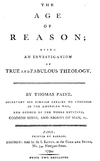
The Age of Reason: Being an Investigation of True and Fabulous Theology, a deistic treatise written by eighteenth-century British radical and American revolutionary Thomas Paine, critiques institutionalized religion and challenges the inerrancy of the Bible. Published in three parts in 1794, 1795, and 1807, it was a bestseller in America, where it caused a short-lived deistic revival. British audiences, however, fearing increased political radicalism as a result of the French Revolution, received it with more hostility. The Age of Reason presents common deistic arguments; for example, it highlights the corruption of the Christian Church and criticizes its efforts to acquire political power. Paine advocates reason in the place of revelation, leading him to reject miracles and to view the Bible as an ordinary piece of literature rather than as a divinely inspired text. Yet, The Age of Reason is not atheistic: it promotes natural religion and argues for a creator-God.
Portal:Books/Selected article/20 The Slave Community: Plantation Life in the Antebellum South is a book written by historian John W. Blassingame. Published in 1972, it is one of the first historiographies of slavery in the United States to be presented from the perspective of the enslaved. The Slave Community is a revisionist study challenging previous scholarship that suggests African American slaves were docile and submissive "Sambos" who enjoyed the benefits of a paternalistic master-slave relationship on southern plantations. Using psychology, Blassingame analyzes fugitive slave narratives published in the 19th century to conclude that an independent culture developed among the enslaved and that there were a variety of personality types exhibited by slaves other than the Sambo.Although the importance of The Slave Community was recognized by scholars of American slavery, Blassingame's conclusions, methodology, and sources were heavily criticized. Historians critiqued the use of slave narratives that were seen as unreliable and biased.
